Artemis: We are Going
Amentum and the Artemis Program: Powering Humanity’s Return to the Moon and Beyond
At Amentum, we are proud to support NASA on one of the most ambitious and inspiring missions of our time—the Artemis Program. This bold initiative is reigniting deep space exploration with the goal of landing the first woman and the first person of color on the Moon, establishing a long-term presence, and laying the groundwork for the first human missions to Mars.
The Journey Begins: Artemis I
The Artemis Program launched its first milestone mission with Artemis I, an uncrewed flight that successfully tested NASA’s Space Launch System (SLS) and Orion spacecraft as a fully integrated system. After launching on November 16, 2022, Artemis I traveled over 1.4 million miles beyond the Moon, orbited the lunar surface for six days, and returned safely to Earth on December 11. This mission was the critical first step in a series of increasingly complex journeys that will bring humans back to the Moon and beyond.
Why the Moon?
The Moon is a stepping stone to Mars. It offers a nearby environment where we can develop and refine the systems, technologies, and strategies needed for long-duration space travel. Artemis will also help us explore the Moon’s natural resources, like water ice, to support future missions and sustainable exploration.
How We’re Getting There – With Amentum at NASA’s Side
NASA’s Orion spacecraft – the only deep space crew vehicle in the world – will carry astronauts on Artemis missions, launching atop the SLS, the most powerful rocket ever built. Amentum is proud to serve as NASA’s largest services-centric provider, supporting Artemis across seven NASA centers with cutting-edge engineering, software development, system integration, testing, and technical services.
Our teams work shoulder-to-shoulder with NASA experts, helping solve the most complex challenges in aerospace. Through every phase, Amentum is honored to be part of this historic endeavor.
Amentum: Advancing Exploration, Empowering Discovery
We don’t just support NASA’s mission – we believe in it. At Amentum, we are committed to advancing space exploration and empowering the next generation of pioneers. The Artemis Program represents humanity’s bold return to deep space, and we’re proud to be helping lead the way.
Making Artemis a Reality
As the prime contractor at Kennedy Space Center (KSC) for NASA’s Exploration Ground Systems (ESG) Program, Amentum plays a vital role for Artemis by receiving all SLS and Orion flight hardware, assembling and integrating all components, conducting final test and checkout, transporting the integrated vehicle to the pad, supporting launch, and then recovering the Orion capsule after splashdown.
The Amentum team helped NASA modernize and upgrade facilities and ground equipment at KSC to prepare for the first Artemis launch. This included upgrades to the Vehicle Assembly Building, refurbishment of the Crawler Transporter 2, and modifications at Launch Pad 39B. The team is now supporting further modifications and preparation of ground systems and launch facilities for crewed Artemis missions.
Amentum is also supporting the development of the SLS and Orion spacecraft through our contracts at Marshall Space Flight Center, Johnson Space Center, Langley Research Center, and Glenn Research Center, and providing project support at Stennis Space Center and Michoud Assembly Facility.
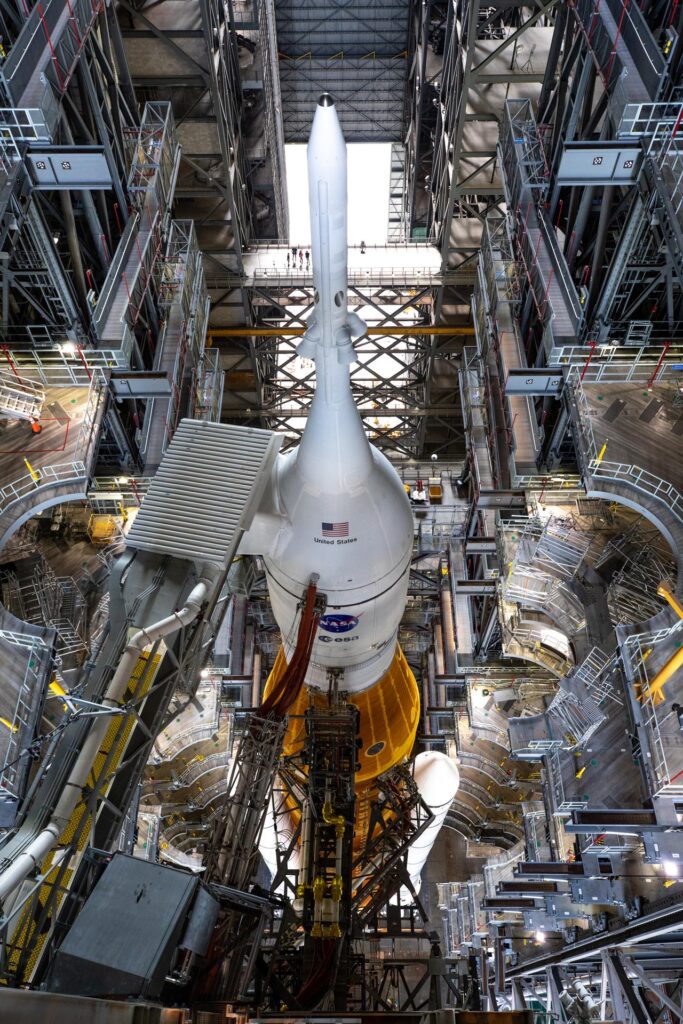
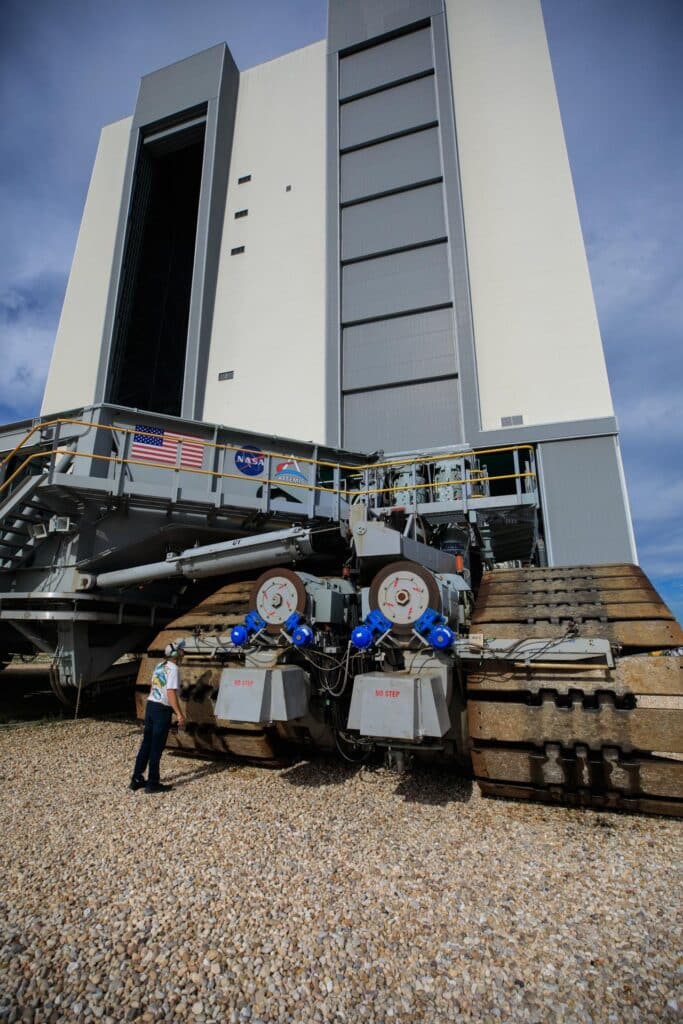
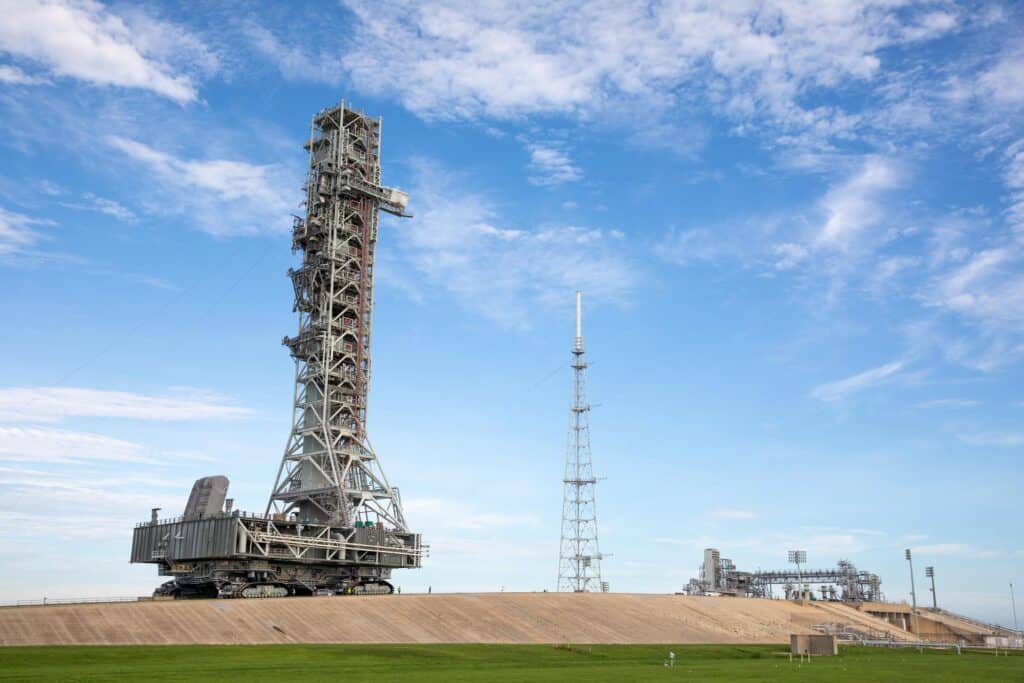
We’re helping to ensure Orion is as safe as possible from launch to re-entry and through to splashdown. The Orion capsule will travel at speeds greater than 25,000 mph through space, re-enter our atmosphere, and slow to about 325 mph before the Amentum Team-developed and tested Orion re-entry parachute system will deploy to slow the vehicle down to a safe landing speed of about 20 mph. Our team performed numerous tests around technical condition scenarios and fully certified the parachute system for approved use on NASA’s Orion crew vehicle.
For NASA’s launch abort system project, we worked across five NASA centers to help develop and successfully test the reliability of the Orion abort system. Amentum provides technical leadership and support to NASA’s Space Launch System and Human Landing Systems Programs across a full spectrum of engineering and technology. Primary support is in systems engineering and integration; propulsion systems development and analysis; flight software development; avionics systems integration; guidance, navigation, and control; modeling and simulation; vehicle structural analysis and load development; and structural, propulsion, and acoustic testing.
Amentum constructed and now operates Marshall Space Flight Center’s Software Integration and Test Facility (SITF), where SLS flight software is tested, and the Systems Integration Lab (SIL), which enables the integration and test of SLS software and hardware.
The Amentum team also designs and oversees the development and testing of the Ground Support Equipment required to transport, test, and operate the massive SLS flight hardware on the ground.
Artemis Spacesuit Technology Development and Validation
With average temperatures on the moon ranging from -298 degrees F in shadow to 224 degrees F in the sun, such a wide temperature range poses a problem for moon-walking astronauts. To address this issue, Amentum worked with NASA to develop the Spacesuit Evaporation Rejection Flight Experiment (SERFE). SERFE was designed to evaluate and demonstrate newly developed active thermal control technology called the Suit Water Membrane Evaporator (SWME) to protect suited astronauts from extreme temperatures. The SERFE Flight unit flew on the ISS for 18 months, simulating 25 eight-hour extravehicular activities (EVAs), while the SERFE Ground unit simultaneously completed 25 “EVAs” here on Earth. The Ground unit is currently simulating a 3-year lunar suit stowage period that ends in March 2025 in the Portable Life Support System (PLSS) Development lab. These integrated tests were successful in Chamber C and Chamber B.
Leveraging technology from the Artemis xEMU spacesuit development program, our team is collaborating with NASA and commercial spacesuit providers to provide safe, durable, flexible, and comfortable spacesuits for use on the moon, both for intravehicular and extravehicular activities.
Keeping Cool in Space
As NASA embraces commercial partnerships to optimize spacesuit technology as part of the Artemis program, the Spacesuit Evaporation Rejection Flight Experiment (SERFE) payload continues to be tested onboard the International Space Station (ISS). SERFE is designed to evaluate and demonstrate active thermal control technology in the microgravity environment of the International Space Station. At NASA’s Johnson Space Center in Houston, engineers have been performing the exact same test on the ground on an identical SERFE unit.
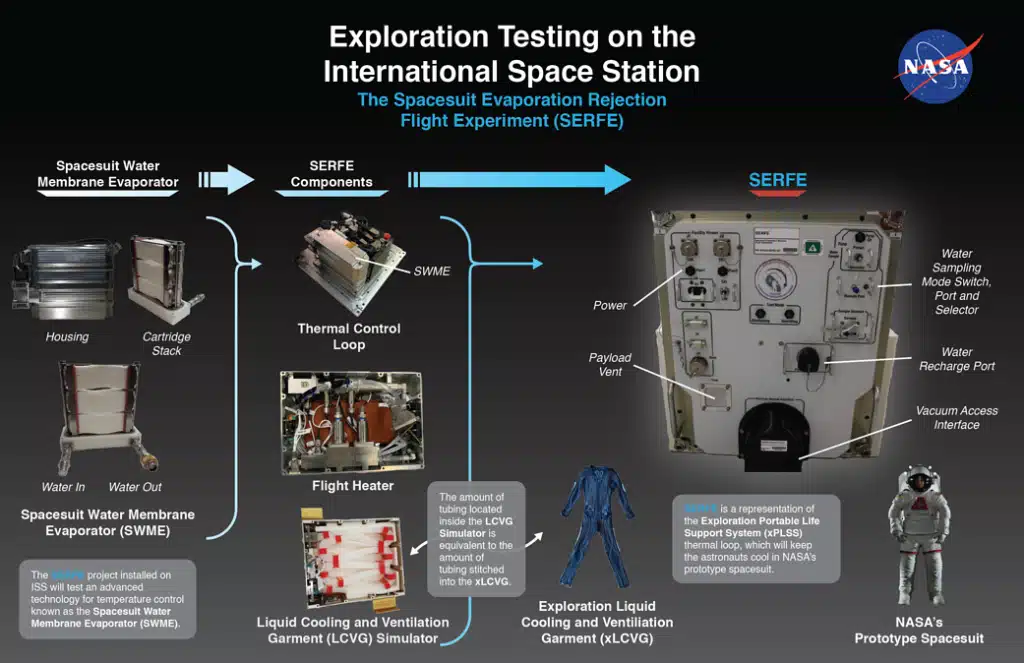
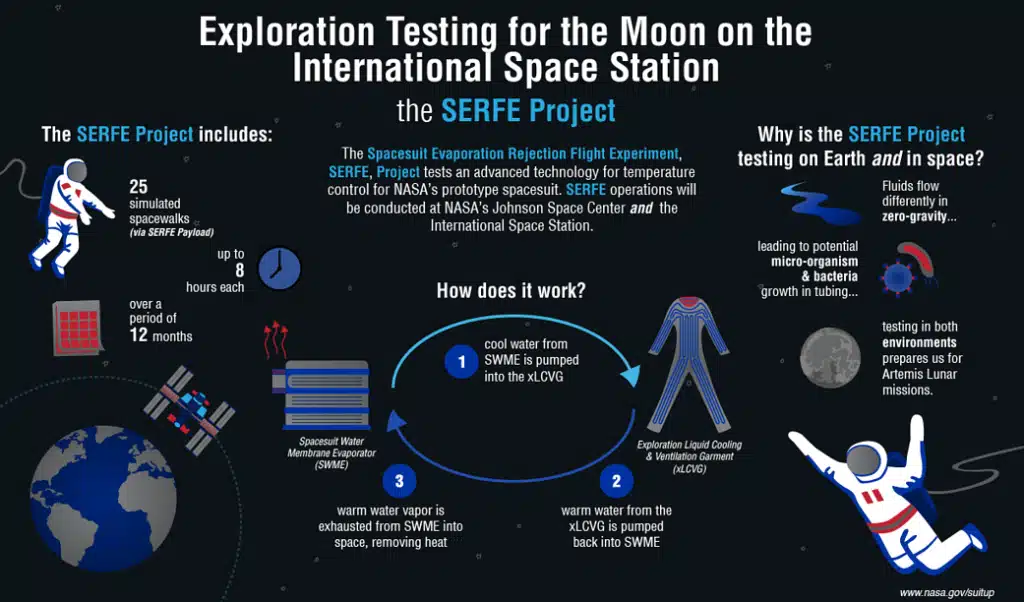
Beyond Artemis
Lunar Gateway
In addition to supporting the Artemis Program, Amentum is playing a key role in advancing deep-space exploration efforts. As Gateway transitions, existing components are being repurposed for other missions, ensuring that prior investments continue to support future objectives. Amentum is actively involved in designing and testing the Habitation and Logistics Module (HALO), a crucial element that will provide astronauts with a pressurized habitat equipped with full communications, navigation, thermal control, and life support systems. Our team is working to develop and validate critical life-support technologies that will safeguard astronaut crews during extended missions beyond Earth’s orbit.
VIPER Autonomous Lunar Rover
The Volatiles Investigating Polar Exploration Rover, or VIPER, was NASA’s Artemis robotic lunar rover designed to traverse the extreme environment of the Moon’s South Pole in search of frozen water and other potential resources. Our robotic engineers at Johnson Space Center directly supported the NASA team in VIPER’s systems engineering, integration, and testing, as well as the design of structural elements, motor controllers, and lights.
*Above photos courtesy of NASA